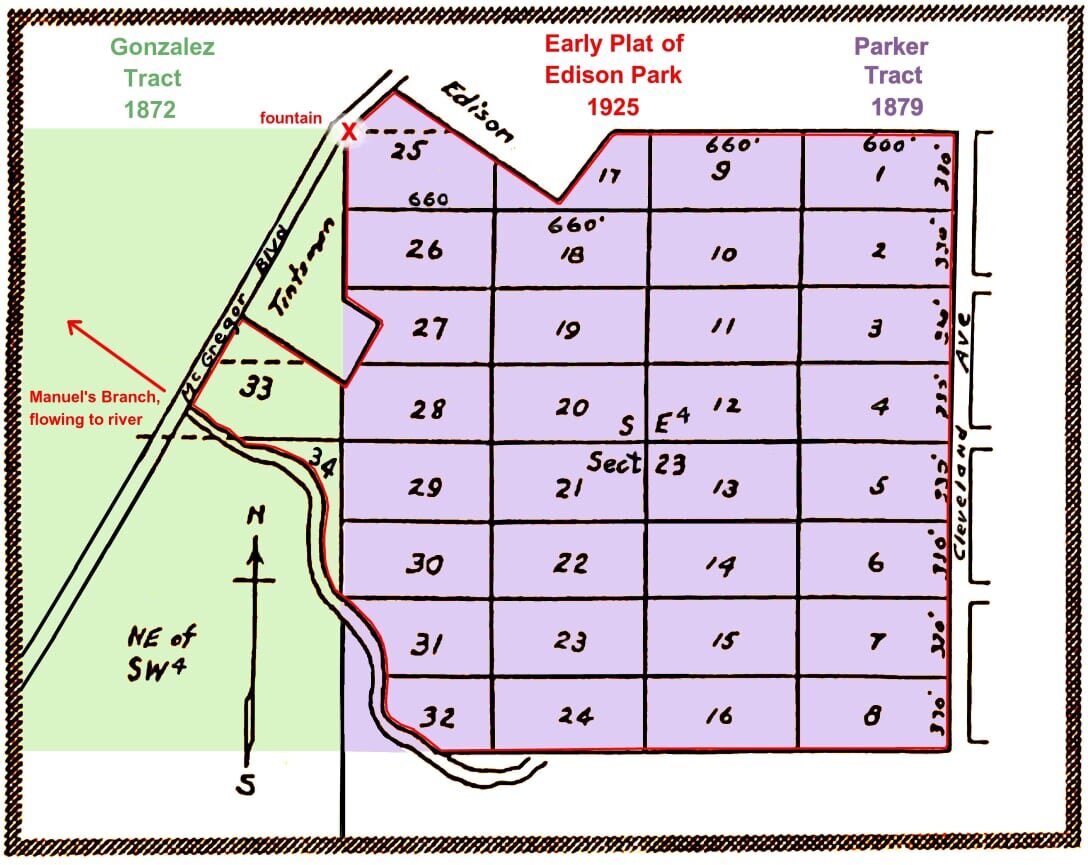For New Homes Development Company, a deed of restrictions was filed which stated that …“all buildings are to be of Moorish, Spanish and Italian architecture… or an American modification”. Later, the deed restrictions were amended to include “variations in harmony with the surroundings”.
The map below is a close-up of the northern one-third of Edison Park, as copied from a page in a 1940’s “Title Abstract”, the pre-digital-age method of tracking and recording the chronological history and details of a property’s ownership:






